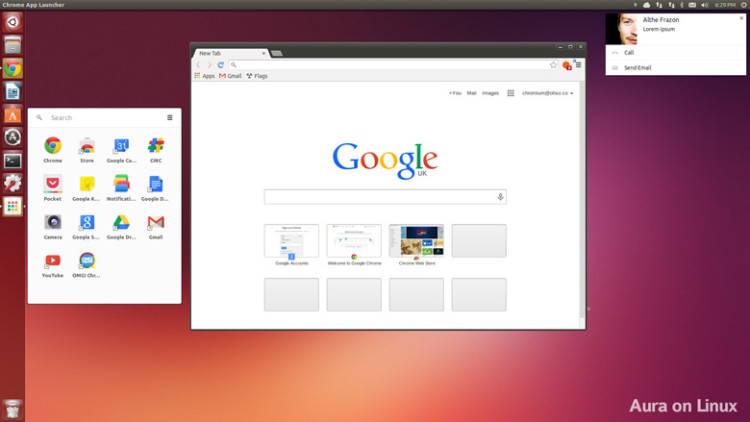Aura has been re-enabled by default on the latest Google Chrome development release for Linux.
The hardware-accelerated graphical stack was briefly enabled in Linux dev builds in the latter half of last year. Performance concerns forced Chromium’s development team to “turn it off” in a subsequent update.
But, now, in this week’s release of Chrome Dev 34.0.1809.0 it’s back for round two.
Ding, Ding – Round 2
If you’re unfamiliar with Aura you can find a concise explanation in our previous article. But to be honest all you really need to know is that it’s the name of the technology now used to ‘draw’ most of what you see of Chrome on screen.
Since its last outing on Linux a number of minor visual tweaks have taken place. For example, font detection now works and the excessive padding on menus and dialogs has been reigned in.
While things are noticeably different to the old GTK-based version, it is not to the point of annoyance. In fact, the only real disappointment is that the option to make Chrome “use System Title Bar and Borders” is, as of 34.0.1809.0 dev, still not available. A flag offering the same effect is available, though the result doesn’t look quite as seamless as you’d hope!
On the subject of window borders, the framing of Chrome Apps currently defaults to a flat, blue Windows XP-style border. It’s currently unclear whether this will be addressed or maintained.
Notification Centre
A bunch of additional features also come as part and parcel of the Aura experience, including Rich Notification support and the Chrome Notification Centre. The former enables better looking interactive alerts – e.g., mark an e-mail as read without opening Gmail – while the latter gives these update bubbles somewhere to wait while waiting for you to action or dismiss them.
On Linux the Notification Centre doesn’t behave in entirely the same way as it does on Mac, Windows and Chrome OS because of intentional constraints on the types of indicators that can appear in the system tray.
Instead, opening the centre in most desktop environments on Linux is a two-click process: first click the bell, then the ‘Notifications’ option listed in the menu.
That and the lack of support for Google Now cards are the only real differences. All other options, e.g., muting alerts, dismissing all, and configuring notification sources, are all present and working.
Flags Ahoy!
In addition to the above you can also try out other features currently under development.
Chrome’s “App Launcher” can be enabled via chrome://flags/#enable-app-list.
The super-new (and super unstable!) user management feature can be turned on via chrome://flags/#enable-new-profile-management.
Getting Google Chrome Dev on Linux
Now for the cautionary bit. While Google Chrome Dev offers a veritable playground of fun new features to lark about with it is unstable. It will crash, it will glitch, and it will add features long before they’re finished.
With that in mind, if you still want to hop aboard the dev train, you can grab installs for Ubuntu, OpenSUSE and Fedora from the Chromium website linked below.



